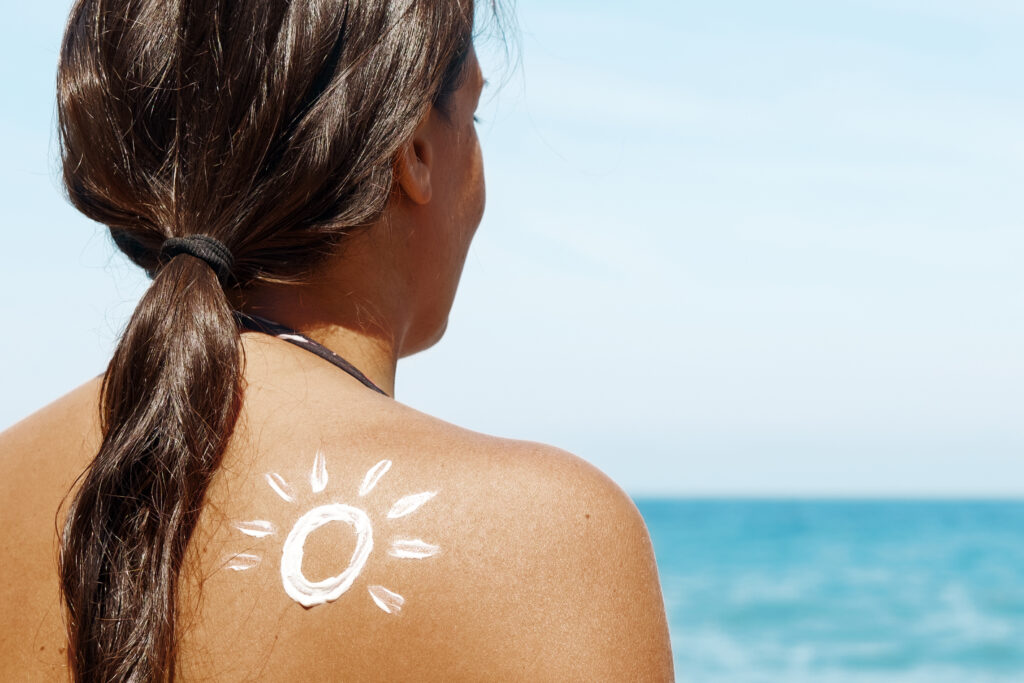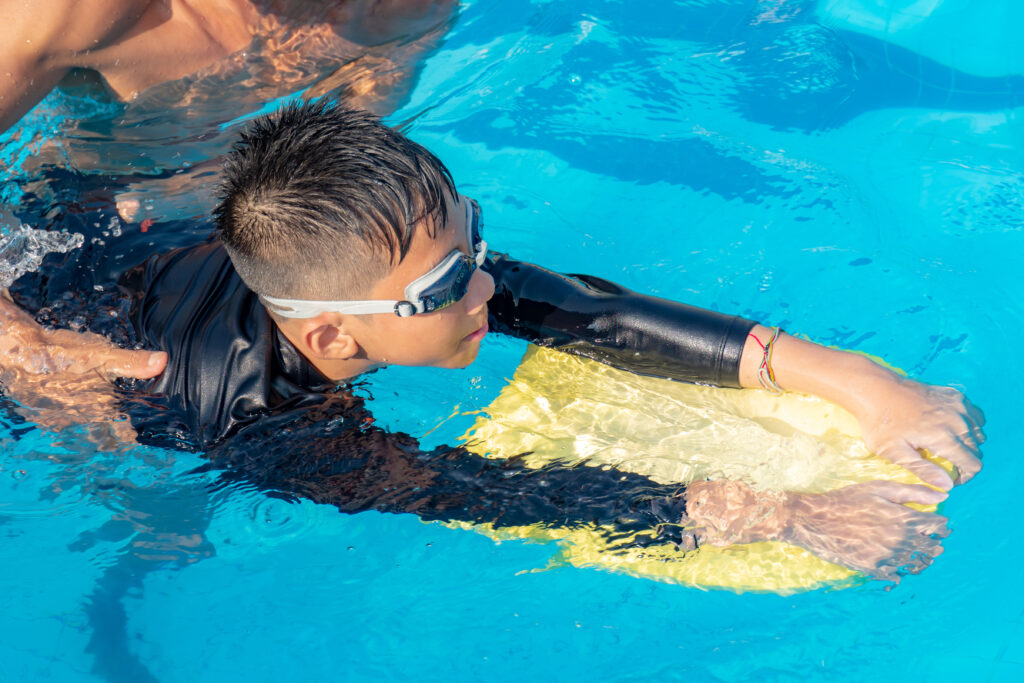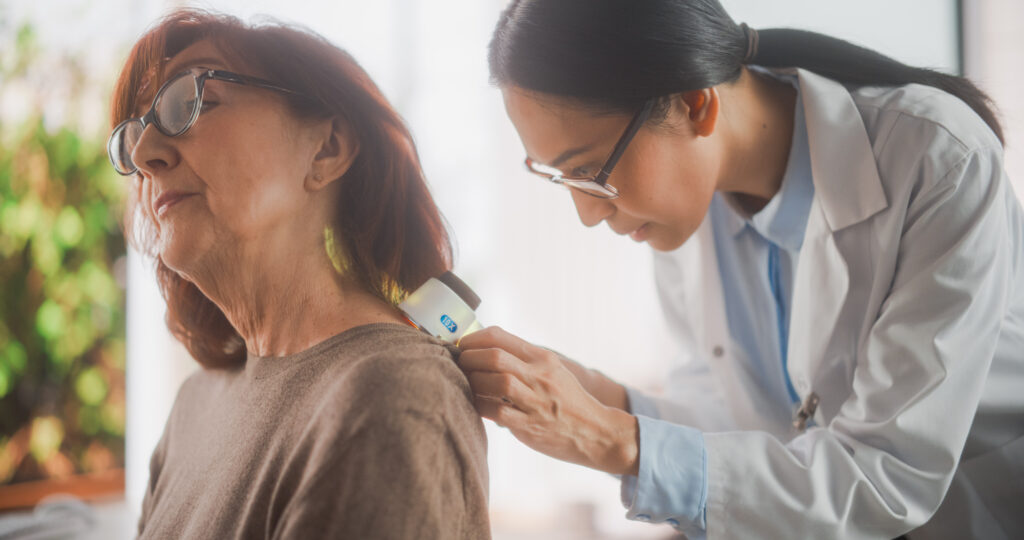Ah, summer. It’s almost time for barbecues and beaches and pool parties and… skin cancer? From mowing the lawn to a round of golf to attending a music festival, the summer months are full of outdoor activities that involve sun exposure. Melanoma and other forms of skin cancer don’t always get the spotlight when Indigenous health comes up – but recent research has shown Native people face the second-highest rates of skin cancer in the United States, surpassed only by White Americans.
Why isn’t this better known? Up until recently, Native skin cancer rates were reported as half of what they really are. Because Native people are so often racially misclassified in clinical environments, skin cancer cases are often underreported, as The Journal of the American Medical Association (JAMA) Dermatology discovered.
The JAMA Dermatology study uncovered the truth because they did something smart: they focused on data from an Indian Health Service (IHS) population-based cancer registry spanning two decades, from 1999 to 2019. The IHS data involved only patients who belonged to federally recognized tribes. But past studies pulled their data from cancer registries, where Native people are frequently miscategorized as Hispanic, White, Asian, or “Other” more than 50% of the time.
The new research showed the true melanoma rate was 10.7 cases per 100,000 Native individuals. That’s nearly double the previously reported rate, which hovered between 4.5 and 5.5 per 100,000 people.
That’s a big discrepancy and it says a lot about the problem of inaccurate data. When individuals are misclassified, we can’t really see the size of population health disparities. Those disparities become icebergs, looking small on the surface, while hiding their true disastrous size beneath the surface. In turn, resources aren’t allocated correctly, public health initiatives don’t reach the right communities, and leaders miss opportunities to focus on targeted prevention strategies.

Skin Cancer and Risk Factors
Melanoma is responsible for more than 9,000 deaths in the United States each year, according to the Centers for Disease Control and Prevention (CDC). Men have twice the melanoma mortality rates than women do across all racial and ethnic groups. That’s true in Native communities, where one study found women had 9.2 incidences and men had 13.0 incidences of melanoma per 100,000. Men 55 years and older had twice the incidence rate of melanoma compared with women of their same age.
This gender gap is partly linked to several factors. Men are often being less likely to protect their skin from the sun, they dominate outdoor occupations such as construction and landscaping, and their thicker skin has less fat and more collagen and elastin, which make their skin more likely to be damaged by the sun’s ultraviolet (UV) rays. Estrogen, on the other hand, can help increase immune response against melanomas.
Native communities share specific risk factors as well. The Journal of the American Academy of Dermatology reported a lower rates of sun protection measures and a higher rate of indoor tanning device use compared to other populations.
But these risk factors point to a positive conclusion: skin cancer is often preventable. Below are practices both patients and healthcare facilities can take steps to reduce skin cancer rates.

Prevention and Detection for Patients
- Limit sun exposure. Avoiding the sun between 10 am and 2 pm is a good guideline; so is seeking shade whenever your shadow appears shorter than you. Just one sunburn can increase your risk of skin cancer – and about one-third of U.S. adults are sunburned each year.
- Wear protective clothing in the sun. Wide-brimmed hats, lightweight, long-sleeved shirts and pants, and sunglasses that provide 100% UVA and UVB protection can protect you in the sun. If you spend a lot of time outdoors or live in a hot climate, look for clothing with an Ultraviolet Protection Factor (UPF) label.
- Apply sunscreen. Look for a Sun Protection Factor (SPF) of 30+ and “broad-spectrum,” which means the sunscreen protects against both UVA and UVB rays. Your sunscreen needs to be reapplied every 2 hours or immediately after swimming, to maintain its effectiveness.
- Limit tanning bed use. There is no healthy tan, whether it’s from the sun or a machine. If you use self-tanning lotion, remember that you can still sunburn even if you look tanned – so keep using sunscreen.
- Get checked on a regular basis. If it’s tough to find a dermatologist in your area, look into telehealth or sign up to be notified of free skin cancer screenings coming to your area.

Prevention and Detection for Facilities
- Look into bringing out a mobile dermatology unit or dermatologist twice a year to your facility. Teledermatology now involves specialized cameras and other equipment to bridge the gap between a city dermatologist and a remote IHS facility.
- Educate patients on the warning signs of skin cancer. Despite being more at risk, one study found 70% of men did not know how to check themselves for signs of melanoma.
- Fix your data reporting mechanisms to classify patients appropriately. This may not be a big problem at IHS and other Tribally operated facilities but plenty of Native people receive care at other hospitals and clinics. Data collection improvements can include asking for Tribal affiliation on intake forms, changing death certificate completion methods, and including Native American as a demographic option in clinical software programs.
- Work with community organizations on culturally appropriate approaches to skin cancer prevention, education, and treatment. For instance, in the Navajo Nation, some people use the phrase “Lood doo na’ziihii,” (meaning “the sore [or wound] that does not heal”) instead of “cancer.” To ensure consistency and clarity around the disease, Edward R. Garrison from Dine College in Shiprock, New Mexico, worked with National Cancer Institute (NCI) and the Mayo Clinic to create a new glossary for cancer terminology in Navajo.
We all want to have fun outdoors in the warmer months. Luckily sun safety doesn’t mean staying indoors but rather, being smart about sun exposure. Following the right safety practices can minimize skin cancer risk, accelerate survival rates, and help everyone enjoy their favorite summer activities for years to come.

